LEWISTON — As a child, Christy Gardner was always on the move.
If she wasn’t kicking a soccer ball, she was guarding the field hockey goal. If she wasn’t throwing shot put, she was playing basketball. At Edward Little High School in Auburn she was named the most physically fit teenage girl in the state. In college, she earned three scholarships in different sports.
After graduation, Gardner, lean and strong with fierce blue eyes, decided to dedicate her life to something bigger than sports and even more active: the military.
“It is a family tradition. My grandfather served in the Marines in the Korean War. My uncles were in the Marines. My cousins were in the Navy. Of course, I got a lot of teasing for going Army, but I loved it,” she said.
A blow to the head in the line of duty changed everything.
Today, the 32-year-old wounded Army veteran can’t get to her second-floor bedroom unless she crawls or uses a stair lift. Her legs and feet are numb in spots, excruciatingly painful in others.
“If you tried to walk around your house and do your daily life with a broken leg, that’s what it feels like. All the time,” she said.
Gardner uses braces and a wheelchair to get around, but it’s been difficult, painful and limiting. And, at times, dangerous. Without sensation in her legs, she once failed to notice a bleeding gash in her ankle until she got woozy.
Desperate for relief, Gardner has made a life-altering decision: She wants her legs amputated.
“Enough is enough,” she said.
Gardner says she knows the risks, understands what could go wrong. She dreams that prostheses will give her something like her old life back. Doctors have told her she could be up and literally running in six months. But even if that doesn’t happen, even if she has to use a wheelchair the rest of her life, she believes it will be easier, safer and less painful to get around without her legs.
“In all honesty, how is that worse than what I’ve got now?” she asked.
But while she is sure of her decision, doctors aren’t. Two surgeons — both said she could be running in six months — have backed out of the surgery, saying it’s not medically necessary.
Gardner is planning to fund the amputation on her own. She’s talking to a surgeon in Minnesota and considering another in Mexico.
It’s a bold move before things turn even more dangerous and she’s tempted to take matters into her own hands.
“I actually heard of a guy in Massachusetts. He was a (paraplegic) and he kept injuring his legs and they wouldn’t take his legs off. So he called 911 and waited until he could hear the sirens and hacked his own legs off,” she said. “They put him in the psych ward for it, but at least he got the surgery and got his legs out of the way. I’d really rather it not come to that (for me). There are so many risks to it. Am I crazy enough to do it? Almost desperate enough at this point.”

Christy Gardner leads a sled hockey practice with her service dog, Moxie, at the Bank of Maine Ice Vault in Augusta. Gardner is a disabled army veteran who plays on a national level sled hockey team, the USA Warriors. Lauren Schneiderman/Sun Journal
Life-changing
When she joined the Army, Gardner had planned to become a combat photographer. It fit her adventurous spirit, her need to be on the go, her love of photography. But women weren’t allowed in combat roles, so she trained for the military police instead.
For a year Gardner was stationed in Korea. Then, in July 2006, there was an accident.
Gardner took a direct hit to the forehead. Some of the details are hazy, others she doesn’t want to talk about, but her injuries were clear. The hit fractured her skull and damaged her frontal and temporal lobes. She also sustained damage to her spinal cord during the incident.
Her head injury was immediately the most serious problem. Gardner had problems walking and talking, was plagued by sudden grand mal seizures and memory loss. Doctors said she’d never drive again, never live alone.
Gardner plowed forward anyway, working through speech, occupational and physical therapies. She was determined to take back her life.
“She’s been remarkable through all this. She’s had such an amazing spirit and, you know, ‘I’m going to prove the doctors wrong. I can do things.’ She never gave up,” said Gardner’s mother, Norma Heidrich-Crowell. “And eventually, they did figure out how to get her seizures under control.”
With service dog Moxie by her side, Gardner was able to live alone in her Lewiston home and regain some of the independence that she’d lost. As her seizures got better she got her driver’s license, got a job with a Turner dog breeder, enrolled in college for a second degree.
And she returned to her first love: sports. Gardner joined the U.S. Women’s Sled Hockey Team, a Paralympic-class team for players with disabilities. In 2013 she was named USA Hockey Disabled Athlete of the Year.
But while her seizures improved, the spinal cord damage did not. Doctors originally thought the trauma would resolve and the swelling would go down, Gardner said, but it hasn’t.
Both of Gardner’s legs are numb from mid-calf down, and what isn’t numb is painful. Her toes feel crushed, her left ankle feels broken.
Although the spinal injury has been stable for nearly nine years — the line of numbness hasn’t moved farther up — Gardner’s legs and feet have been repeatedly damaged because she can’t feel them.
“I could (walk without braces) a little bit at the beginning, but I basically had foot drop. I couldn’t lift my own toes, pick up my own feet. So the more I tripped, the more ligaments I damaged,” she said.
At times it’s been life-threatening. Gardner, who is allergic to bees, didn’t realize she’d been stung one day until her throat started to swell shut and she broke out in hives. She didn’t notice a bleeding, 4-inch gash on her ankle until she started getting lightheaded. At times this winter her sneakers have frozen to her feet, but she couldn’t feel it.
“As of right now, the skin is falling off both feet in layers, probably from repetitive frostbite this winter,” Gardner said.
Braces help her get around and offer some protection, but they’re clunky, easily damaged and generally not built for someone who trains a service dog puppy, cares for dogs at Varney’s Labs and coaches the Central Maine Community College lacrosse team. Gardner has gone through eight pairs of braces so far. The last brace broke a few weeks ago when she dashed to pick up the phone.
“(The prosthetist) said, ‘Well, you’re not supposed to be active in them.’ I said, ‘Are you kidding? What else am I supposed to do?'” Gardner said. “What’s the good of braces if you can’t jog 10 steps?”
Even walking is frustrating. Gardner struggles to visit her mother at home, the threshold blocked by a single step.
When she can’t wear braces or has to navigate a long distance, Gardner uses a wheelchair. That comes with its own problems.
“Do you know how inaccessible Maine is?” she asked.
While the VA won’t clear her to participate in anything that requires a medical note for fear she’ll get hurt and won’t feel the injury, doctors have advised her to stay as active as possible. Gardner is happy to comply with that advice. Or at least try to.
But her legs, she said, keep getting in the way.
If that wasn’t clear to her before, it became obvious when she joined the USA Warriors, a sled hockey team out of the Walter Reed Army Medical Center. Nearly everyone on the team is an amputee.
“But all of my teammates are more active than me. They all can walk more, some of them can run. They all have a better gait than I do,” she said. “So, honestly, I kind of got jealous. It sounds stupid that they’re missing legs and I’m jealous of them, but they can do more than I can.”

Christy Gardner, second from left, runs drills with the Central Maine Community College lacrosse team in the parking lot of the Androscoggin Bank Colisee in Lewiston. Gardner coaches the team that includes Emily Butterfield, left, Danielle Allen and Lacey Landry. While Gardner can catch and throw the ball from where she stands, she can’t run. Daryn Slover/Sun Journal
Amputation
Gardner spoke to her primary care doctor, a military man himself, about the possibility of amputating her legs.
“He said he normally wouldn’t consider such a thing, but in my case it might enable me to be more active, which of course rang bells for me,” she said.
But while Gardner was excited about the possibility of having her legs amputated, her family wasn’t. At least not at first.
“I think I did a really good job of maintaining my composure when she told us. She told us over breakfast one morning,” said her mother, Heidrich-Crowell. “When she went home that night, that’s when I kind of broke down. I mean, nobody wants to see something like that happen to their child.”
It took weeks for family members to accept the decision. Gardner’s struggles, her rapidly diminishing quality of life, convinced them. Meeting her sled hockey teammates helped, too.
“They’ve adapted. Do they have depressing moments? I’m sure they do. Do they have tough times? Yeah, who wouldn’t? But they’ve gone on and they’re able to embrace life,” Gardner’s mother said. “I know she’s talked with the guys quite a bit and other people. I have to support her.”
Gardner said the VA medical facility at Togus approved the amputation and sent her to Walter Reed in Maryland, where she met with medical staffers three times this past fall. The plan: Amputate both legs below the knees, losing the pain and numbness but keeping the knee joint flexibility that’s so important for walking upstairs and running.
“They said, ‘Yep, we’ll do it. You’ll be down here four to six weeks; you’ll be starting walking in four weeks. You’ll be proficient by six weeks.’ And in six months I’ll be able to run,” Gardner said. “Oh my god, to go from a wheelchair to running in six months? Is huge. I would love to be able to look at the dog and take the leash and say, ‘Let’s go for a run.'”
Although the VA would pay for the surgery and prosthetic legs, Gardner would be responsible for other costs, including airfare, a hotel room for the non-medical aides she was required to have during rehab and adaptions to her home and car. She set up a GoFundMe campaign to help raise the several thousand dollars she would need.
She titled it: “Help me get new legs!”
But her excitement didn’t last long.
On her third visit, the Walter Reed doctor who initially approved her operation changed his mind.
“The surgeon said he couldn’t in good conscience take a girl’s legs and that I’m too pretty to lose my legs and that I should stick with the wheelchair and be thankful I’m not a (quadriplegic),” Gardner said.
She doesn’t know why he made that decision, but she believes he may have had a change of heart when he learned that he, not a colleague, would have to perform the amputation.
“I was devastated. It was awful. I mean, I called my brother crying,” Gardner said. “How can you tell somebody, ‘Oh, yeah, you’ll be able to run in six months,’ and then, ‘Oh, you should stick with the wheelchair.'”
Sandy Dean, a spokeswoman for Walter Reed, said patient privacy laws prevent her from commenting on a specific patient’s case. However, she spoke of Walter Reed’s overall policies regarding amputation, saying surgeries are done only when medically necessary, and the decision to approve or deny an operation does not come from a single doctor.
“Before any operations are considered, patients undergo extensive, detailed work-ups involving physicians from multiple specialties to ensure care is medically necessary,” Dean said.
Gardner said she had no sense that anyone other than the surgeon was opposed to her operation. No one else told her it shouldn’t happen.
“I met with PT (physical therapy) and prosthetics and they were excited to do it and get me running again,” she said. “The prosthetist was awesome, going over components and everything he thought I would be able to do once I got up and moving.”
However, she said the person directing her mandatory pre-op psychiatric evaluation did say that “they want me to be happy with my body as it is.”
“This isn’t about a body image issue, though. It’s about function. I don’t care what my feet look like or what they’re made from; I just want to be able to use them,” Gardner said.
After her denial at Walter Reed, Gardner said she went back to Togus. A surgeon agreed to perform the amputation and she passed her psychiatric evaluation. However, Gardner said, a Togus ethics committee took a look at her case and turned her down.
Like at Walter Reed, a VA Maine Healthcare System spokesman declined to comment about a specific case. He said general policy is to amputate only when medically necessary.
“They want to wait until I have gangrene,” Gardner said.
That emergency surgery would be more dangerous and complex, and the recovery more complicated, Gardner said. And she would risk losing her knees.

Christy Gardner has been disabled for nearly nine years. A lift to get her upstairs in her Lewiston home was recently installed. Before the lift, Gardner crawled up the stairs on her knees. Daryn Slover/Sun Journal
“Being able to walk upstairs would be awfully nice,” she said.
The canceled surgeries have frustrated Gardner’s family.
“If she could have prosthetic legs and be active again, how can you say no?” Heidrich-Crowell said. “You know, the doctor says, ‘Well, not everyone can run on prosthetics.’ Knowing my daughter, she will. That shouldn’t even be a question. Of course, they don’t know the pre-injured Christy.”
She worries about what will happen to her daughter, both physically and emotionally, if she doesn’t get the surgery. Over the past few months, Gardner has lost weight because of the pain in her legs. She’s been upset by the roller coaster of approval and denial, and depressed at the thought she may have to continue trying to live with legs that won’t work.
“I don’t like to see her spirit being broken so,” her mother said.
Others have been worried, too. A few weeks ago, after Togus denied her surgery, Gardner said, the VA called police and warned them she might be suicidal.
“The police called and I said, ‘No, I’m not suicidal. But I might cut my own legs off soon if they aren’t going to do it,'” she said.
“I’d rather not do that,” Gardner added. “I would like to find a surgeon somewhere who’s willing to give me a chance.”
Through a medical tourism agency and her own research, she’s connected with a surgeon in Mexico. He’s said he’ll perform the amputation, and she’s considering it.
Gardner has also spoken to a Minnesota surgeon who might be willing. He is waiting on copies of notes from the VA.
Because she’ll have to pay for the surgery herself, Gardner increased her GoFundMe campaign goal to $25,000. So far she’s raised just under $9,000.
She said she has no illusions that the amputation will be easy. She hates hospitals, hates the thought of a long rehab. And she has experience with the pain of amputation. In 2005, Gardner lost three fingers on her left hand after an injury.
“The nerve pain when I lost those was unreal. Two days after surgery I passed out from the pain. And that was just fingers, so I’m picturing with my legs it’s going to be horrific,” she said. “But it’s a risk I’m willing to take.”
She considers the alternative — continuing as she is — even more horrific.
“It’s got to be somewhere about quality of life,” she said. “At what point do you say yes, this would change my life?”
Send questions/comments to the editors.


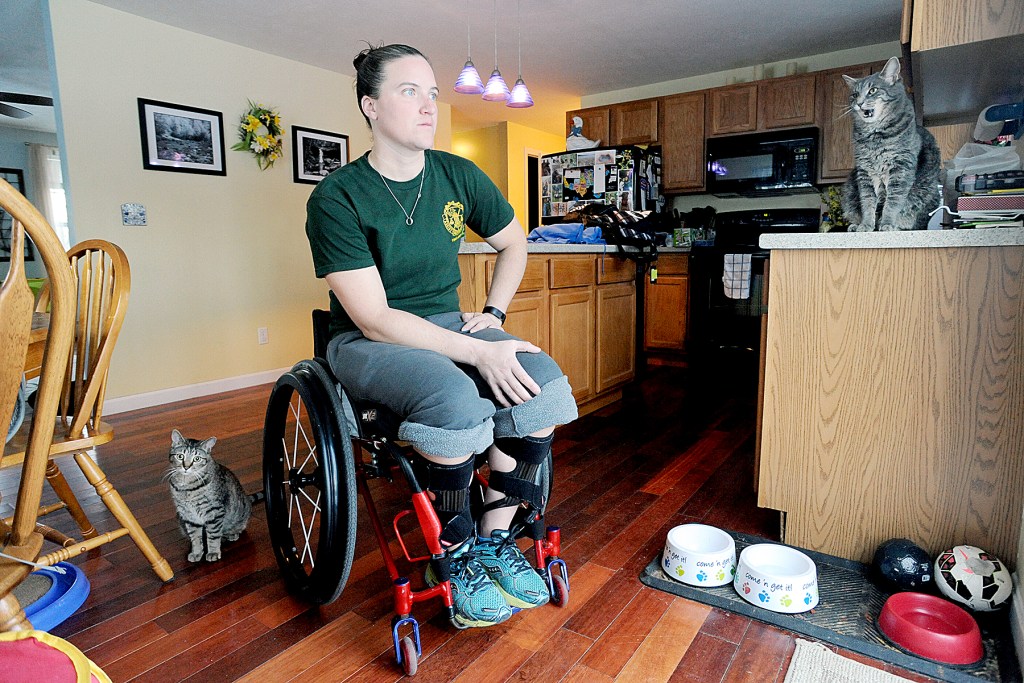

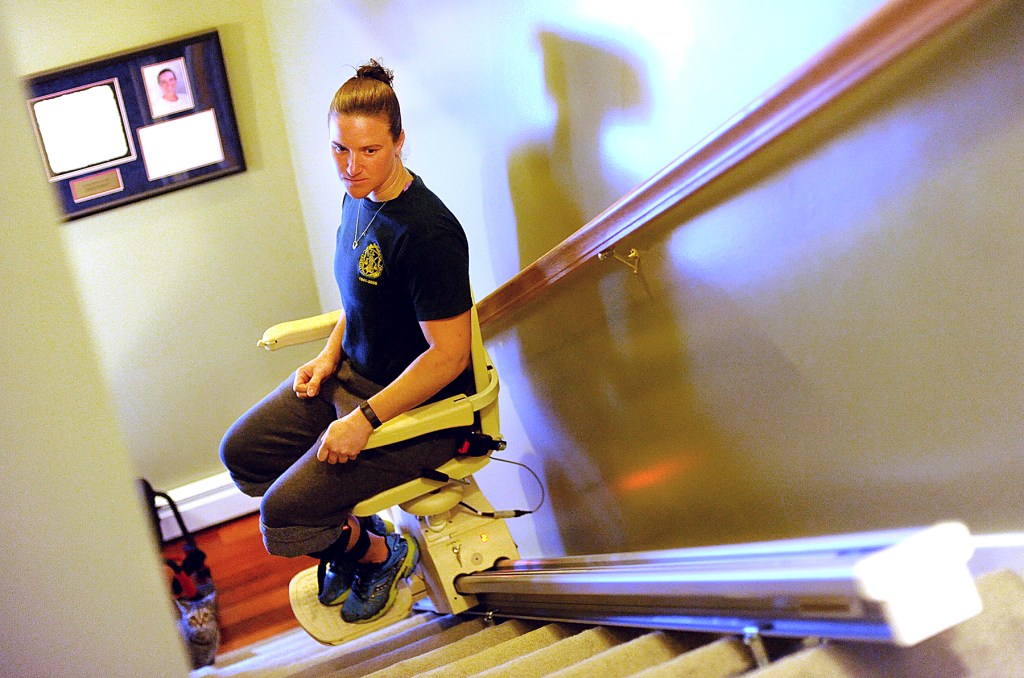
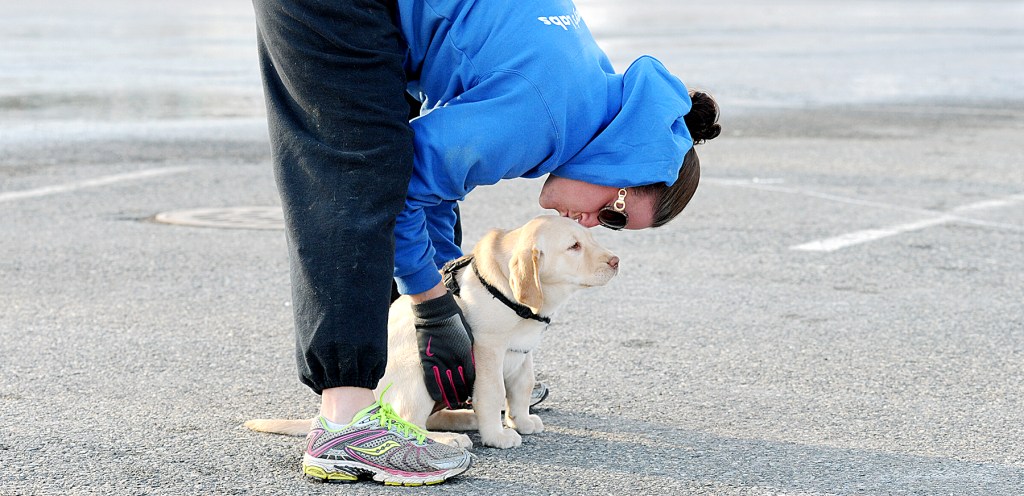
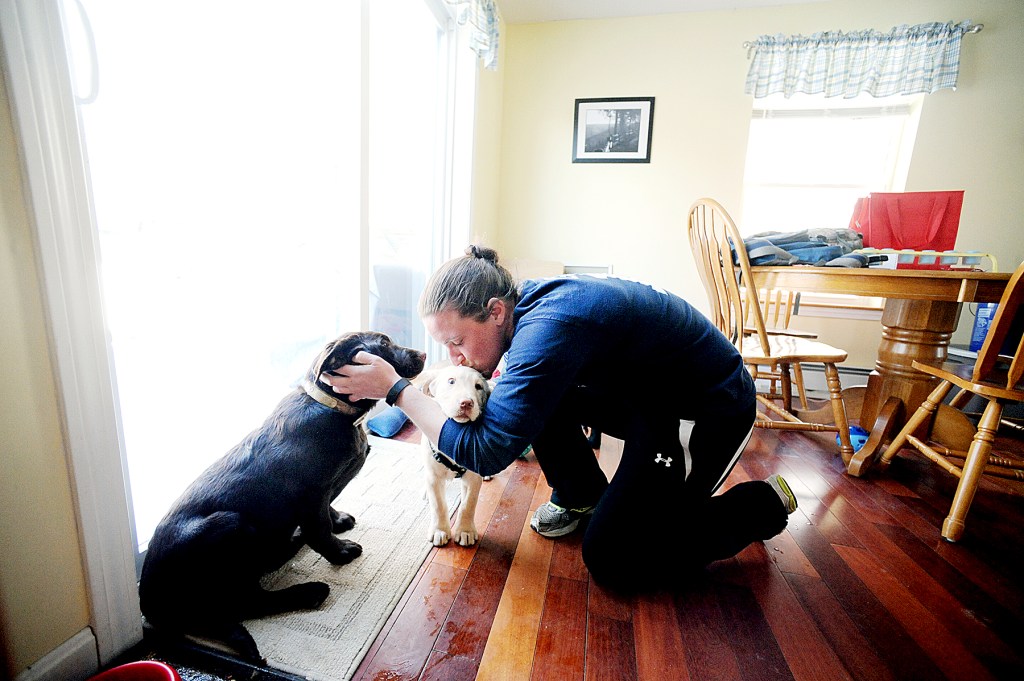
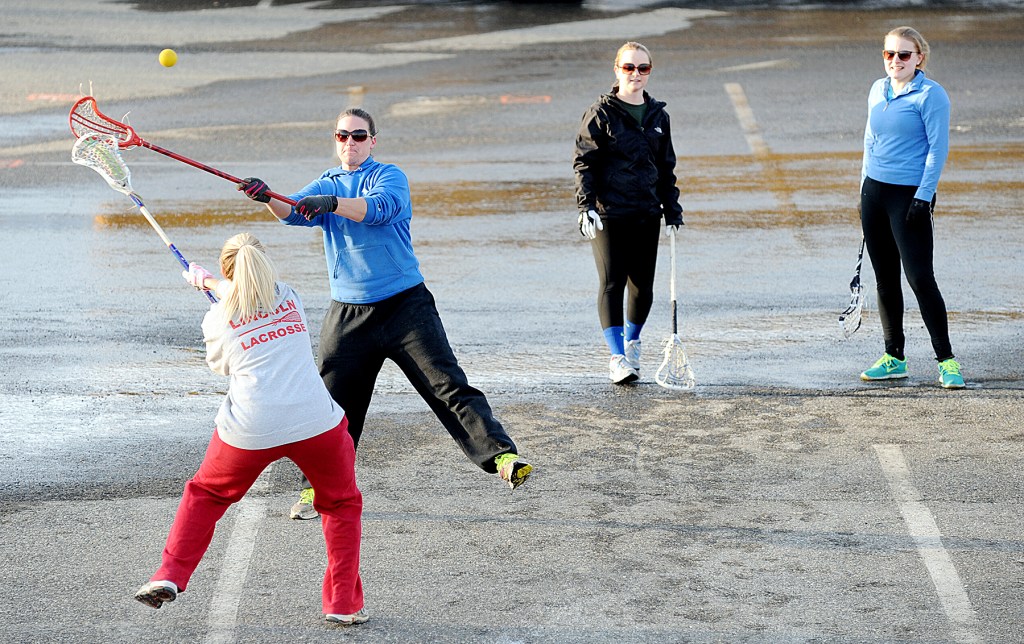
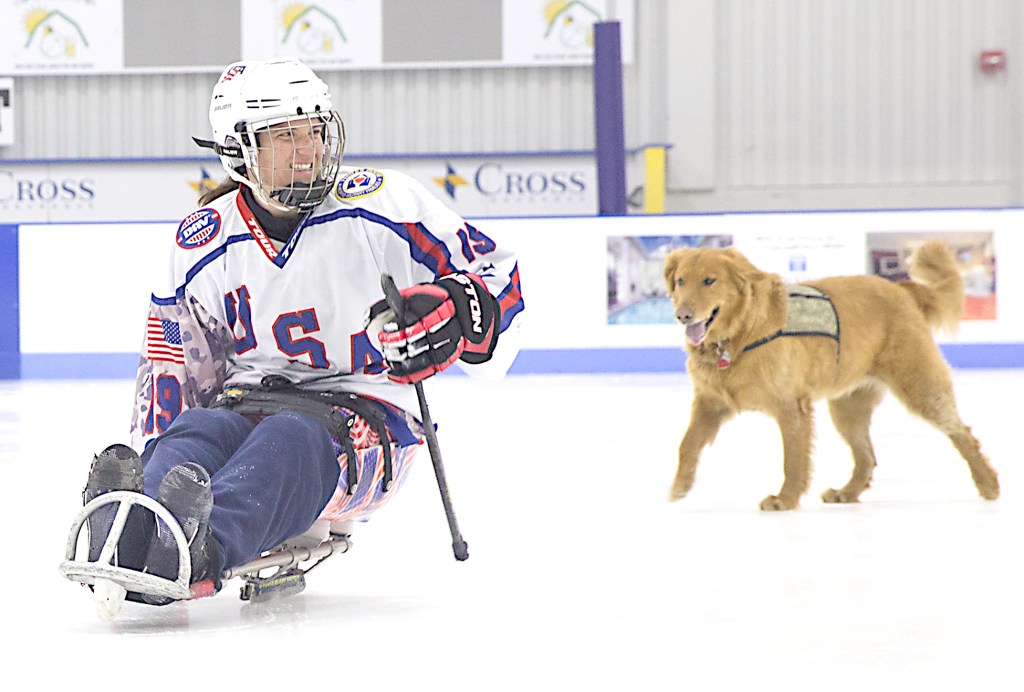
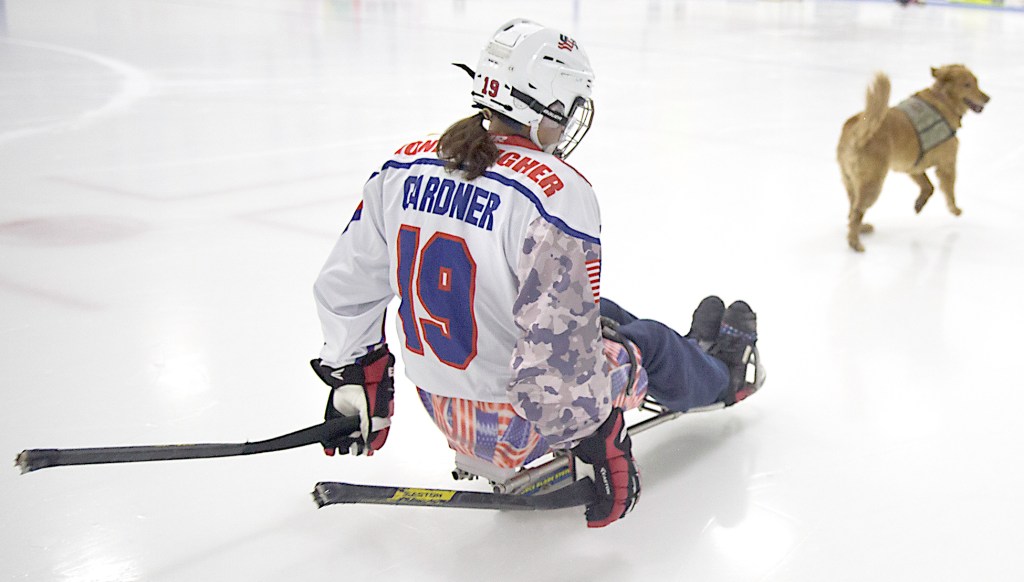
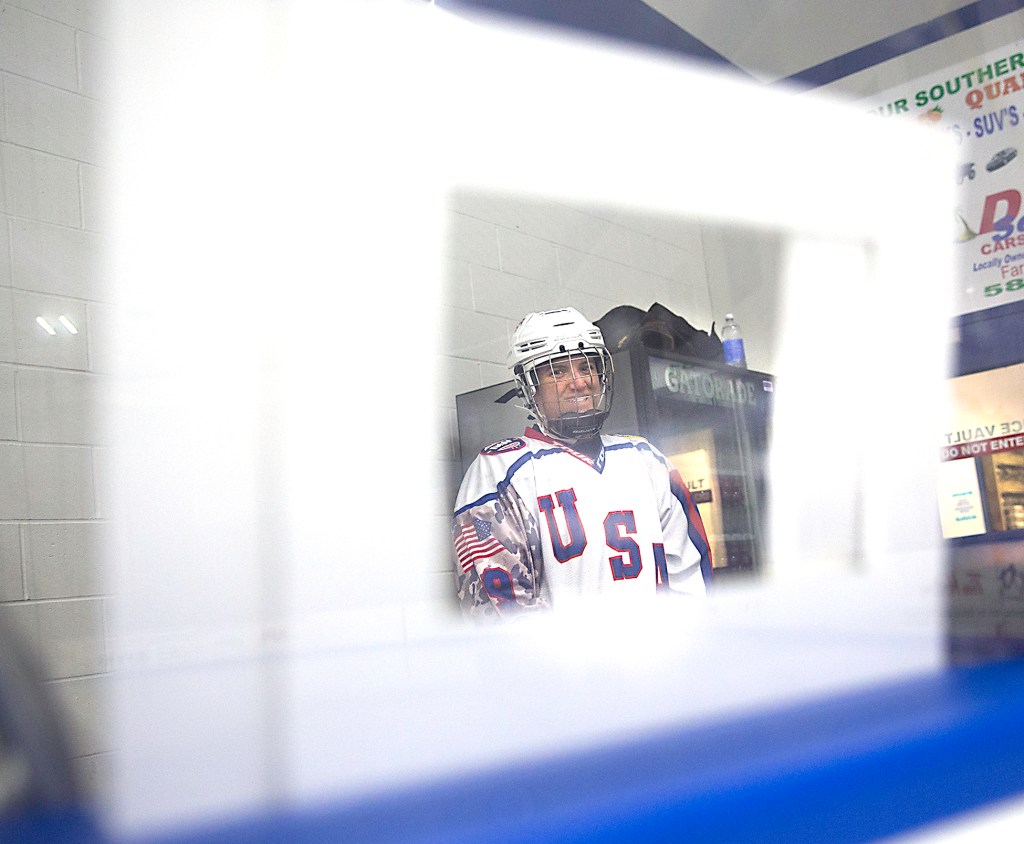

Comments are no longer available on this story